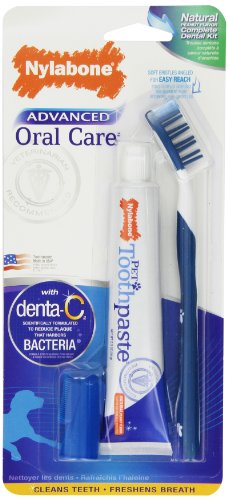A Guide To Common Dog Skin Problems
Dogs which scratch more than usual likely have a skin disease. Fortunately, the majority of dog skin problems are easily cured after a quick trip to the vet.
A rash that your dog scratches at persistently is most likely allergic dermatitis. Corticosteroids can help alleviate symptoms, but the most effective treatment is identifying and removing the root allergen. Common dog allergies include grooming products, pollen, insect bites, and food.
If your dog's itchiness seems to be concentrated on the ears and/or toes, it could have a yeast infection. Symptoms of a yeast infection include itchy, irritated, or discolored skin, most likely on the ears and paws. Your vet can prescribe a topical cream to clear up the infection. Oral drugs and medicated baths are also options.
Superficial bacterial folliculitis presents as sores, scabs, and bumps. The infection is easier to identify in shorthaired dogs. Longhaired dogs will most likely present with excessive shedding and scaly skin. It is common for superficial bacterial folliculitis to occur simultaneously with other skin problems.
Impetigo is a bacterial infection found in puppies. It causes pus filled blisters which commonly break and crust over. The blisters form on the hairless portion of the abdomen, making the disorder easy to identify. Impetigo is treated with a simple topical solution.
Seborrhea causes dogs to develop greasy skin and scales. This is occasionally a genetic disease that the dog will have for life, but most often it is a sign of an underlying issue such as allergies or hormonal abnormalities. The underlying cause must be treated for symptoms to abate.
Ringworm is not a worm, it is a fungus. The name comes from the circular lesions which form on the affected dog's forelegs, paws, head, or ears. Highly effective anti-fungal treatments are available.
Excessive shedding and hair loss is called alopecia and is a symptom of another underlying problem. Nutritional deficiency, stress, or an underlying disease can cause thinning of the coat.
Mange is a classic skin problem for dogs. It is caused by mites and the symptoms include sores, intense itching, red skin, and hair loss. The treatment varies based on the type of mange.
The most common skin problem for dogs is fleas. Most infestations just cause itching, but some cause blood loss and anemia. Tapeworms and other parasites are carried by fleas as well. Some dogs are allergic to fleas and will develop alopecia and/or allergic dermatitis simultaneously.
Another common parasite is the tick. Appreciable blood loss is rare as it would take many ticks, but they do carry Lyme disease. Lyme disease is a potentially serious infection. Dogs can be vaccinated for Lyme disease.
Acral lick granuloma is a disorder that is a result of excessive licking. The wound is unable to heal and becomes painful, exacerbating the condition. The treatment includes preventing the dog from continuing the behavior. Foul-tasting topical solutions and cone collars are available to solve the problem.
Hot spots are a common with dog skin problems. They are small areas of irritated, inflamed, and red skin. Treatment includes addressing the underlying cause.

 A Review of The Invisible Fence
Chubbymy pet LabradorI have a pet dog, named him Buddy, he i
A Review of The Invisible Fence
Chubbymy pet LabradorI have a pet dog, named him Buddy, he i
 Five Ways to Stop Dog Barking When You Leave Your Pet Alone
Many dog owners are surprise
Five Ways to Stop Dog Barking When You Leave Your Pet Alone
Many dog owners are surprise
 Dogs :: 3 Reasons Why You Would Want a K9 Unit (Page 1 of 2)
K9 units or dog units are glorified in movies. If you have w
Dogs :: 3 Reasons Why You Would Want a K9 Unit (Page 1 of 2)
K9 units or dog units are glorified in movies. If you have w
 Dog Dental Health: Preventing Diseases and Plaque On Your Dogs Teeth
Your Dogs Dental HygieneOkay, so you can&rsquo
Dog Dental Health: Preventing Diseases and Plaque On Your Dogs Teeth
Your Dogs Dental HygieneOkay, so you can&rsquo
 Best Options for a GPS Locator for Pets
I remember when I was a chil
Best Options for a GPS Locator for Pets
I remember when I was a chil